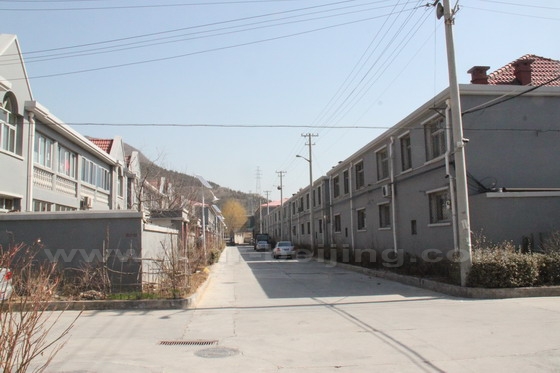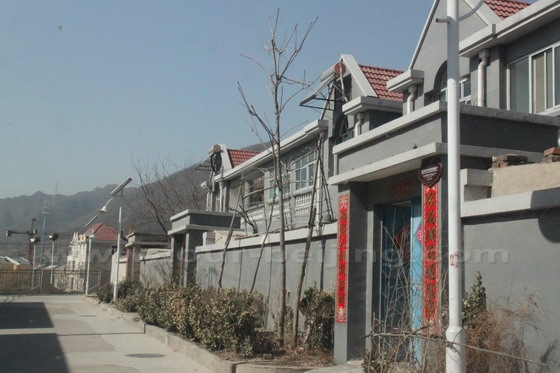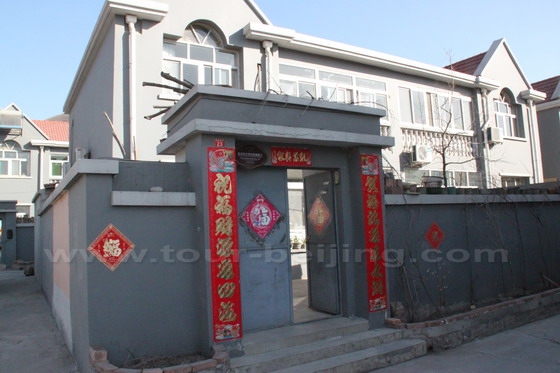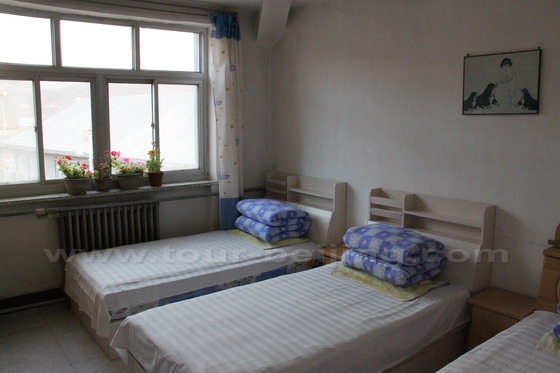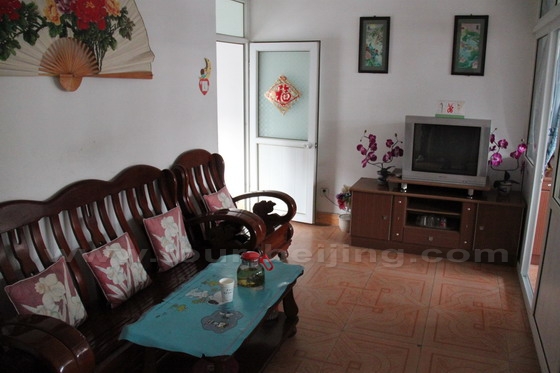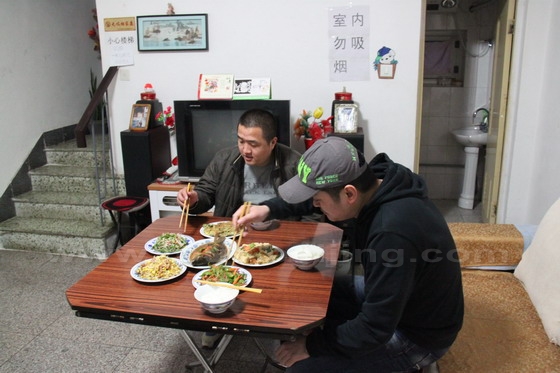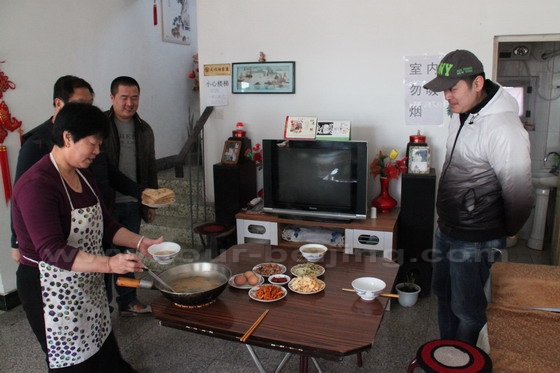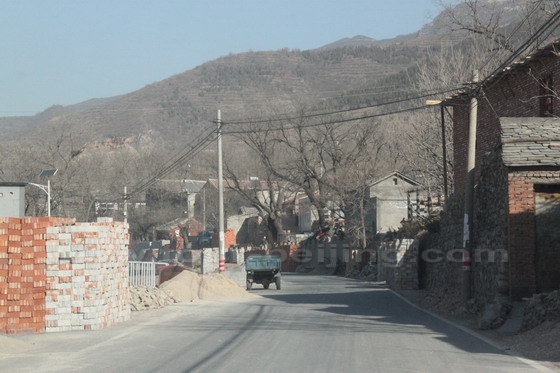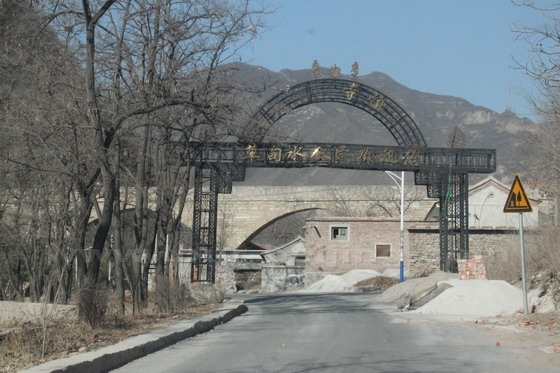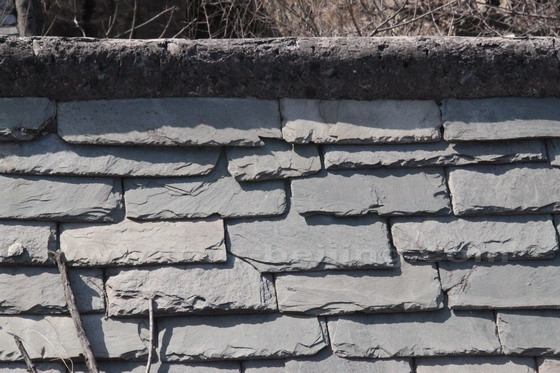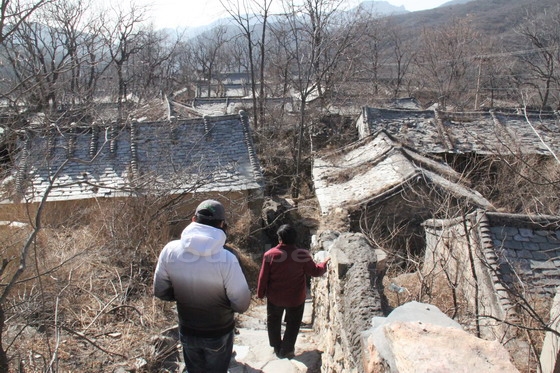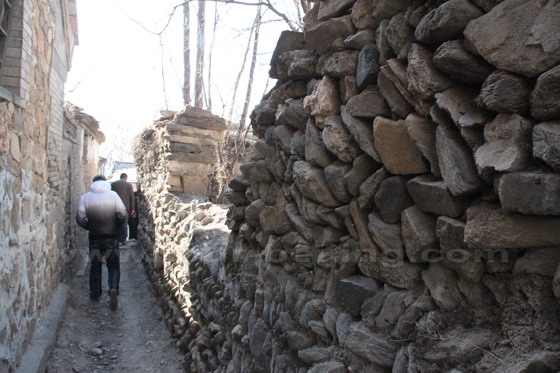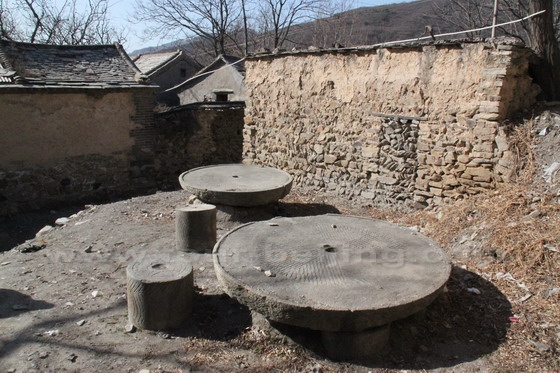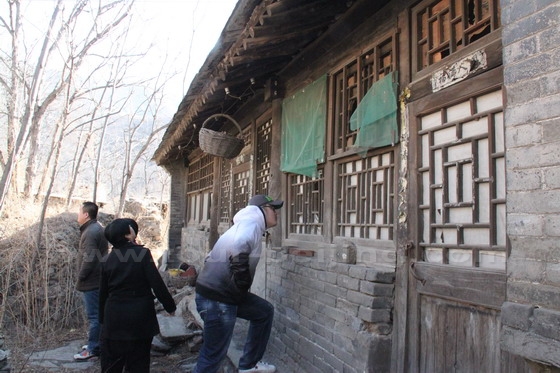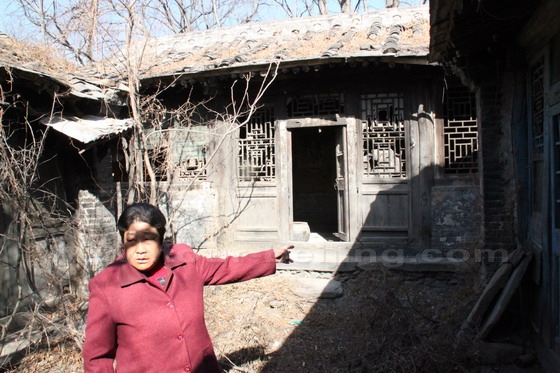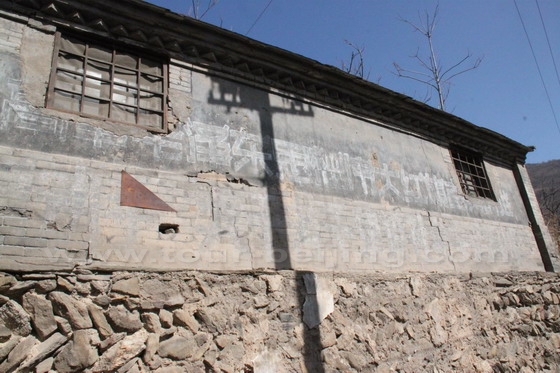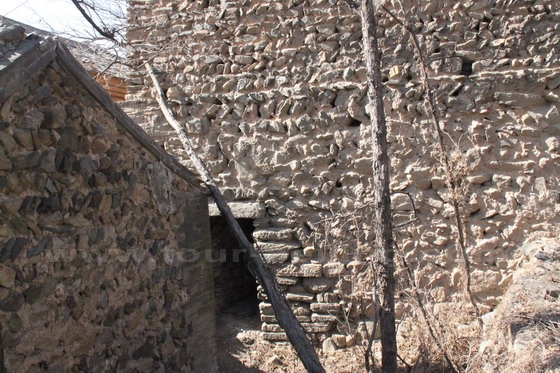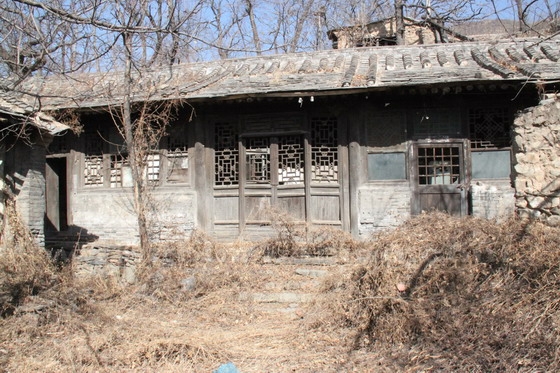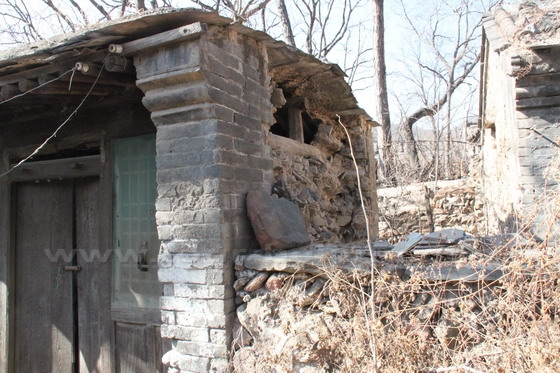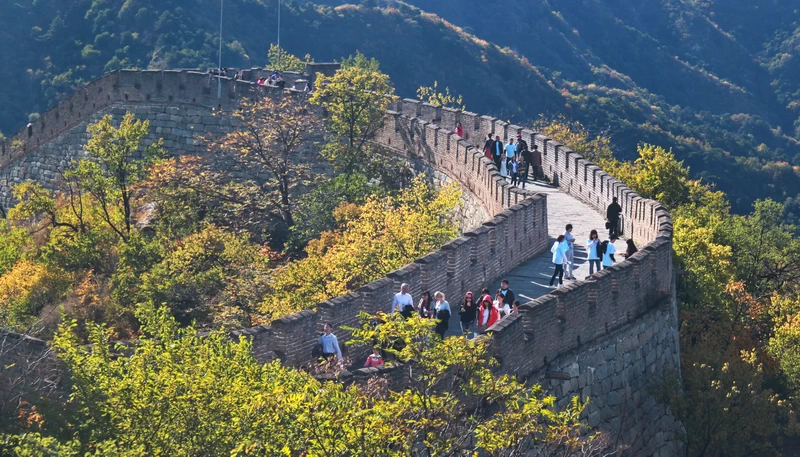“Zhaojiatai” literally means “the Zhao family’s platform”. The ancient village “Zhaojiatai” was named after the first family surnamed “Zhao” who settled on the platform on a hillside surrounded by the mountains on its three sides.
At present, Zhaojiatai Village has two parts – New Zhaojiatai Village and Old Zhaojiatai Village which are about 8km apart. Starting from 1996, the whole village (old village) began to move to the new place at the foot of the mountains at Tanzhe Town mainly due to avoiding the possible landslide on the mountains where the old Zhaojiatai Village is located.
The new Zhaojiatai Village is located in the center of Tanzhe Town under the jurisdiction of Mentougou District Beijijng. The new Zhaojiatai Village is about 30km away from the center of Beijing. The old Zhaojiatai Village is nestled on the platform in the valley of the mountains, approx. 8 km northwest of the new Zhaojiatai Village.
The new Zhaojiatai Village is sandwiched by Jietai Temple and Tanzhe Temple, which makes it accessible by visitors who prefer to include the new Zhaojiatai Village as well as the 600-year old Zhaojiatai Village on their travel list while visiting either Tanzhe Temple or Jietai Temple.
Old Zhaojiatai Village
The origin of the old Zhojiqtai Village goes back to Ming and Qing Dynasties with a history of over 600 years. There is an old saying that “Zhajiatai Made of Iron, Beijing of Paper”.
As an isolated village in the deep valley of the mountains, the old Zhaojiatai Village was prone to the looting from the bandits. The villagers were quite united and they established their own village militia force. The great thing they did was digging tunnels under the village connecting every households to protect possible robbing from the bandits.
Today though the old village has been actually “abandoned”, all theses ancient tunnels are still there telling people the long history of Zhaojiatai Village. These tunnels helped the local village a lot during the anti-Japanese War in 1937.
One old villager says if the Ninth Army of Guomingdang fought the first shot at the Japanese Army at Lugouqiao on July 07, 1937, then Zhaojiatai Village fired the second shot at the Japanese Army on August 08, 1937.
The old Zhaojiatai Village fought back the a contingent of the Japanese soldiers who pursued the Chinese Ninth Army that withdrew and passed through the ancient path near Zhaojiatai Village. The battle went on for a whole day without any result. The Japanese army had to leave, hence the old saysing “Zhajiatai Made of Iron, Beijing of Paper”.
One year later, heavily armed, the Japanese army again attacked Zhaojiatai Village. The Japanese soldiers burned down over 200 houses. The whole village evacuated to the surrounding village till the victory of the Anti-Japanese War. It is a pity that many of the old Ming and Qing Dynasties houses were burned and collapsed.
The old village doesn’t have much arable land provided it is located in the mountainous area. Beside the small amount of arable land, many of the local villagers raised domestic animals like horses, donkeys for transport business.
Apart from transport trade, the village also operated small coal mines as well as producing a rare ore for man-made diamond saw blades.
Most of the houses in the Old Zhaojiatai Village are made of stone bases, brick walls and inner wood structures. All the tiles on the house roofs are made of sliced and thin stones. There are still some people living in the village who are paid to take care of the “abandoned villager”. Some of the villagers have rent their houses to the urban residents who come here for serenity and peace.
New Zhaojiatai Village
The total evacuation for the whole old village to the present new village takes about 8 years starting from the year 1996. No arable land, no mountains to grow plants. Then how to make a living for a village that has been moved to the downtown of Tanzhe Town.
With the financial support from the local government, about 100 two-storey villa type houses are built for each family in the new village. Each household uses the villa type house to offer accommodation and dining for visitors who stay overnight in Tanzhe Town. Usually the family member live on the first floor and the tenants stay on the second floor.
So, now the official name of the new Zhaojiatai Village is “Zhaojiatai Folk-Custom Tourism Reception Village”. The local villagers have the smart slogan “Sightseeing at the Old Zhaojiatai, Eating and Staying at the New Zhaojiatai”.
Well, follow us to travel the Old Zhaojiatai Village and eating and staying at the new Zhaojiatai Village.
On March 16, 2011, after visiting Tanzhe Temple, it was almost 5:00pm. We were looking around for a hotel in Tanzhe Town. We were surprised to find that there were no hotels in the town!
Later we were told the whole village in the town named “Zhaojiatai Village” offers accommodation and dining. Very tired and not willing to return to the downtown Beijing, we had to accept the village inns.
The two-storey houses in the new Zhaojiatai Village.
We selected Mrs. Wang Fengxia’s house for our overnight stay. She looks kind and helpful. With all their three children working in the city of Beijing, she lives with her husband in the two-storey building.
The old village is 8km northwest of the new village with a very good asphalt road linking the village. We passed two other villages before we reached the old village. Now we were passing Nanxin Village.
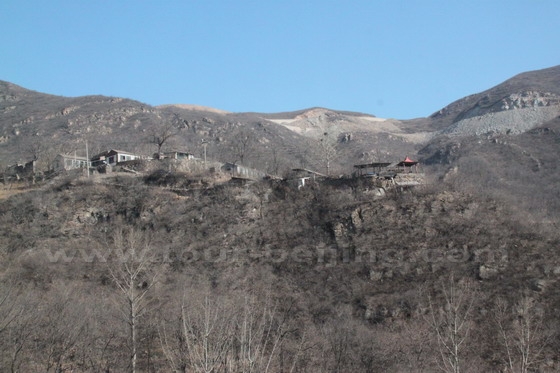
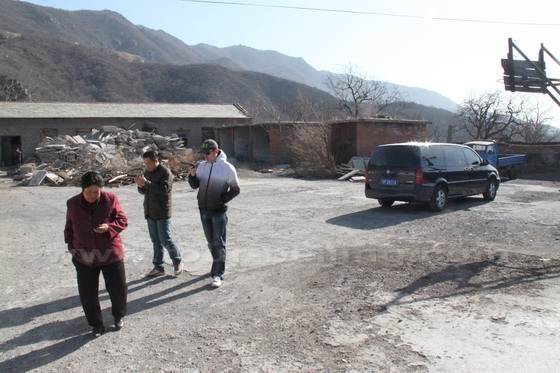

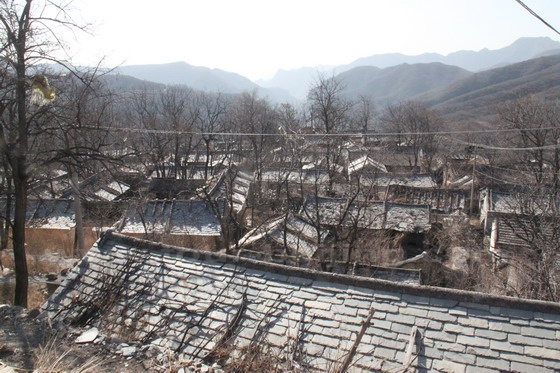
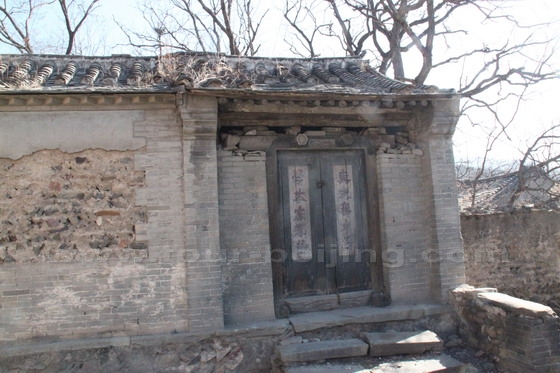
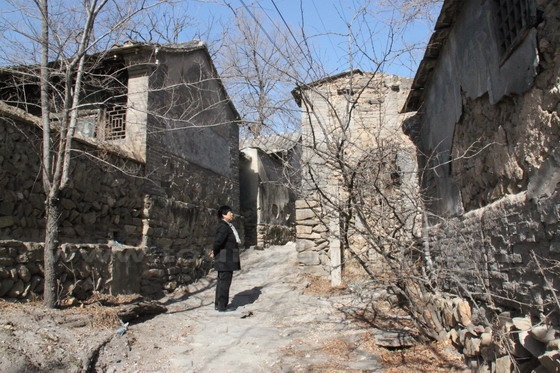
Tip: Hassle-free Beijing Guided Tours
If you don’t want to go the do-it-yourself route and prefer the hassle-free escorted tours, here are some options for Beijing guided tours:
Beijing Day Tour
Beijing Tour Packages
Beijing Winter Tour
Beijing Autumn Tour
Great Wall Tour
Car Rental in Beijing
Beijing Tours
China City Tours
China Tour
Further Readings
Best Time to Visit Beijing
How to plan a trip to Beijing
Top 10 Attractions in Beijing
How to Visit Forbidden City
How to Visit Temple of Heaven
How to Visit Summer Palace
How to Visit Ming Tombs
How to Visit the Great Wall of China
How to Visit Tiananmen Square
How to Visit Hutongs
How to Visit Olympic Sites
Top 10 Markets in Beijing
Top 10 Shopping Malls in Beijing
Beijing Shopping
Wangfujing Walking Street
Qianmen Commercial Street
Gui Jie ( Ghost Street) Food Street
Any questions, just drop a line.






